Cortado and cappuccino are among the world’s most popular coffee drinks. But if you are new to the world of coffee or generally prefer your coffee straight, you might wonder what the differences are.
After all, they are made with whole milk and a double shot of espresso. Doesn’t that make them more or less the same thing?
The two drinks might have similar ingredients but provide distinct coffee experiences in many ways. Let’s compare cortado vs. cappuccino to determine what you can expect when ordering them in a coffee shop.
What is a cortado?
A cortado is a small coffee drink containing equal parts espresso and steamed milk, typically 1oz each. Its name comes from the Spanish word cortar (to cut), which refers to the milk cutting through the espresso to reduce acidity.
According to Spanish coffee traditions, the milk for a cortado is steamed. It has very little foam, allowing the milk and espresso to blend well. It results in a perfect balance of smooth milkiness and bold flavor.
Traditionally, a cortado is served in a small glass, so coffee drinkers sometimes confuse it with a latte or macchiato. Another espresso drink you might mistake for a cortado is flat white. They are made with the same ingredients, but a flat white typically has more steamed milk with a 1:2 espresso-to-milk ratio, which results in cortado having a stronger coffee flavor.
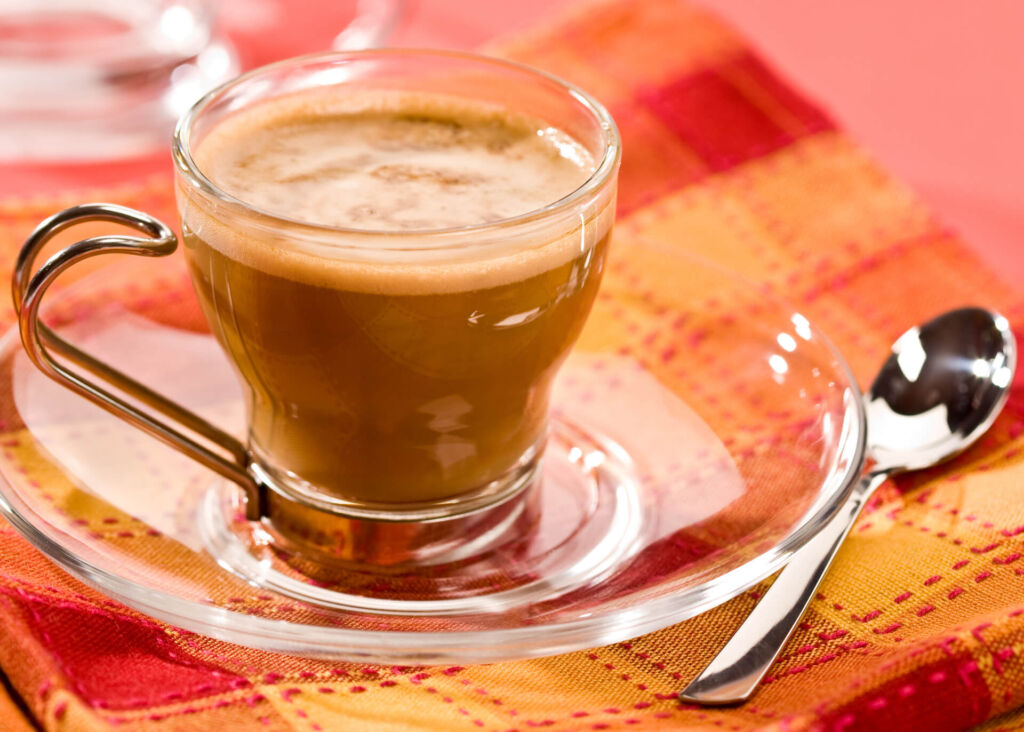
What is a cappuccino?
A cappuccino is an Italian coffee drink with equal parts of espresso, steamed, and foamed milk. It is one of the most popular espresso-based drinks. With its silky smooth and foamy texture, it’s no wonder, so many coffee fans enjoy a good cappuccino.
In a professionally-made cappuccino, the ingredients form three distinct layers, which set it apart from similar espresso drinks, like breve. That said, there is a variant called a bone-dry cappuccino that is made with only espresso and foam with no added steamed milk. The thick milk foam on top — consisting of bubbles so fine you should barely be able to see them — is perhaps the most famous characteristic of cappuccino and the perfect canvas for stunning latte art.
Italians drink cappuccino strictly as a breakfast beverage, traditionally served in a 6oz to an 8oz cup. However, elsewhere in the world, it is enjoyed around the clock and often comes in servings as large as 12oz.
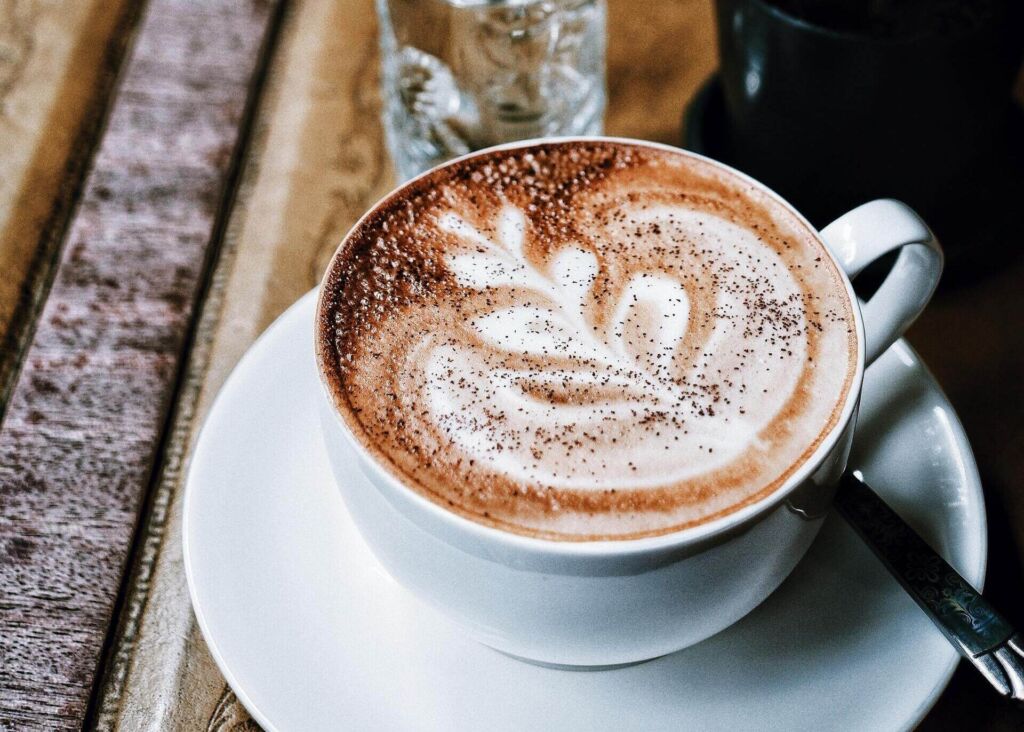
Cortado vs. cappuccino: the main differences
Although cortado and cappuccino share the same ingredients, they are not exactly the same. Let’s explore what sets these two coffee drinks apart!
Origin
You might think all popular espresso drinks hail from Italy — espresso is an Italian invention. While cappuccino comes from Italy, cortado coffee is a Spanish invention.
It is not clear when exactly someone made the first cortado. It comes from the Basque Country in northern Spain but may have originally had a different name.
“Café cortado” was first written in a Barcelona coffee shop manual in 1926. By the end of the century, cortado had left Spain and spread worldwide.
Its rising popularity also gave birth to some cortado variations. For example, Cuban baristas invented the cortadito — a cortado made with sweetened condensed milk.
Meanwhile, Australians have a piccolo latte, which consists only of a single shot of ristretto — a concentrated form of espresso. Finally, in California, the Blue Bottle Coffee Company created Gibraltar coffee using a slightly different coffee-to-milk ratio to accommodate a Libbey glass.
Although the modern cappuccino is undoubtedly Italian, its roots go far back in history. Cappuccino predates espresso — one of its main ingredients!
A coffee drink called “Kapuziner” first emerged in 18th-century Vienna, Austria, and contained coffee, cream, and sugar. It reached the Italian peninsula by the 19th century and received its current name.
At that time, espresso hadn’t been invented yet, so the drink was made with black coffee and milk or cream. The current version of cappuccino cropped up only after World War II as the modern espresso machine became more widespread.
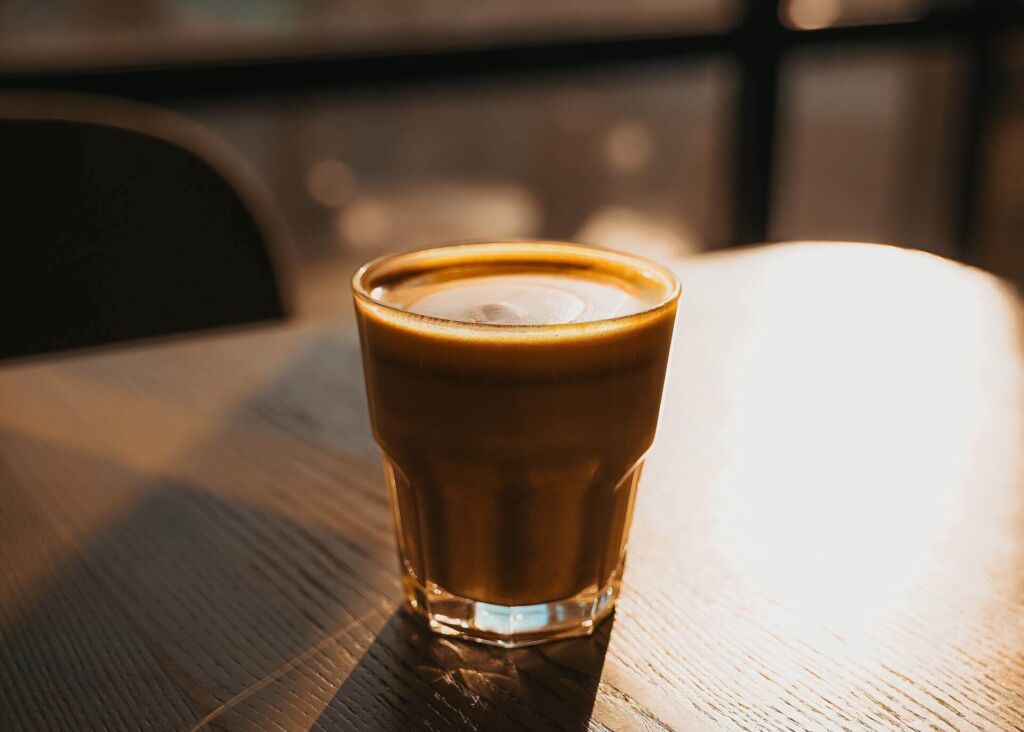
Serving size
You can distinguish a cortado from a cappuccino by the different serving sizes. A cortado is a smaller drink than a cappuccino.
A traditional cortado comes in a small roughly 4oz carajillo glass. The barista fills it half full with one shot of espresso and one ounce of steamed milk, totaling 2oz.
A carajillo is a Spanish alcoholic coffee drink that mixes espresso with strong liquor and is drunk as a shot. As such, using this vessel upholds cortado’s proud Spanish heritage.
However, cortado has grown slightly since its origins. Today, it is commonly made with a double shot of espresso. The milk-to-coffee ratio remains unchanged, so the modern cortado fills the entire 4oz glass.
In chain coffee shops, cortado may come in a larger glass but still measures 4oz. Some cafes prefer to serve it in a ceramic cup.
The traditional cappuccino is a 6oz drink. It contains two shots of espresso and two ounces of steamed and frothed milk.
But — just like with its smaller cousin — the drink’s popularity has made cappuccino outgrow its origins. While the Italians stick to the smaller serving size, in other countries, cappuccinos tend to be served in 8oz or larger cups.
Starbucks, for example, serves cappuccinos as huge as 20oz. Yet despite the size difference, these drinks should have an equal proportion of espresso, steamed milk, and foam.
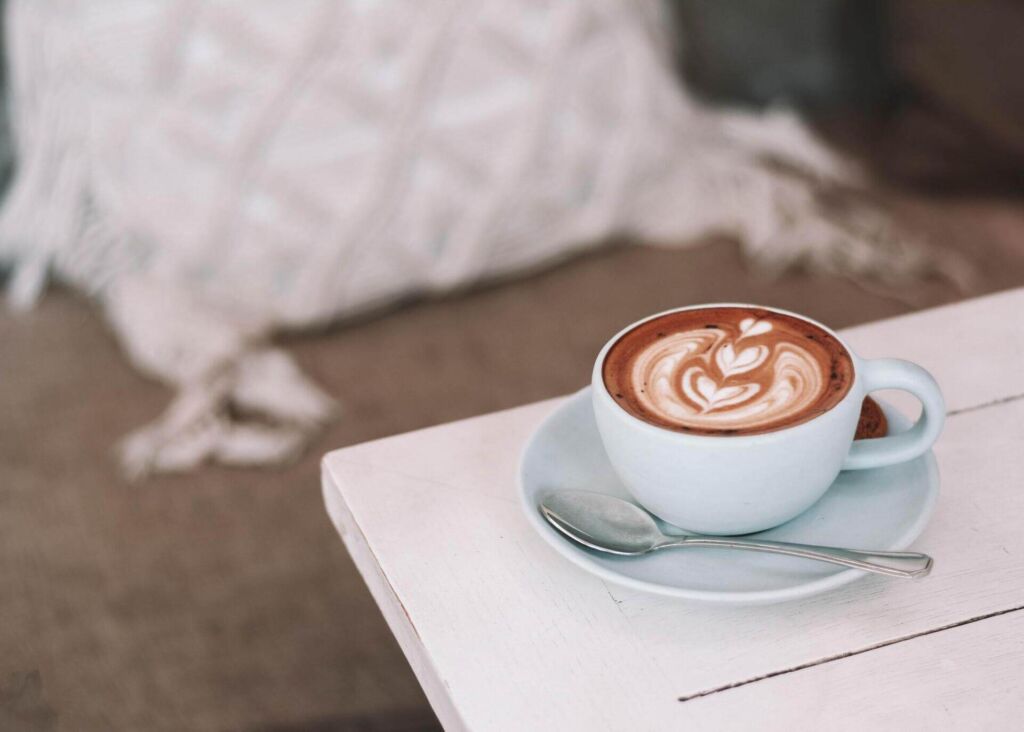
Appearance
A cortado generally has an even, dark tan color with a tawny top, while a properly made cappuccino should be layered.
In a cortado, the hot milk and espresso combine evenly. This gives the cortado a consistent, darkish brown color, close to a light-roasted coffee bean — characteristic of a milk coffee drink.
A thin foam layer should be the only thing breaking up a cortado’s color. Otherwise, the drink visible through the serving glass should have an even tone.
When a traditional cappuccino is served, it should have three distinct layers. You may not see them since cappuccino is typically served in a ceramic cup. Nonetheless, the espresso should be on the bottom, followed by the steamed milk, and finally the frothed milk.
However, Italians mix their cappuccinos before drinking them, blending the layers of coffee and foam. A stirred cappuccino has a lighter tan color than a cortado due to the higher amount of milk.
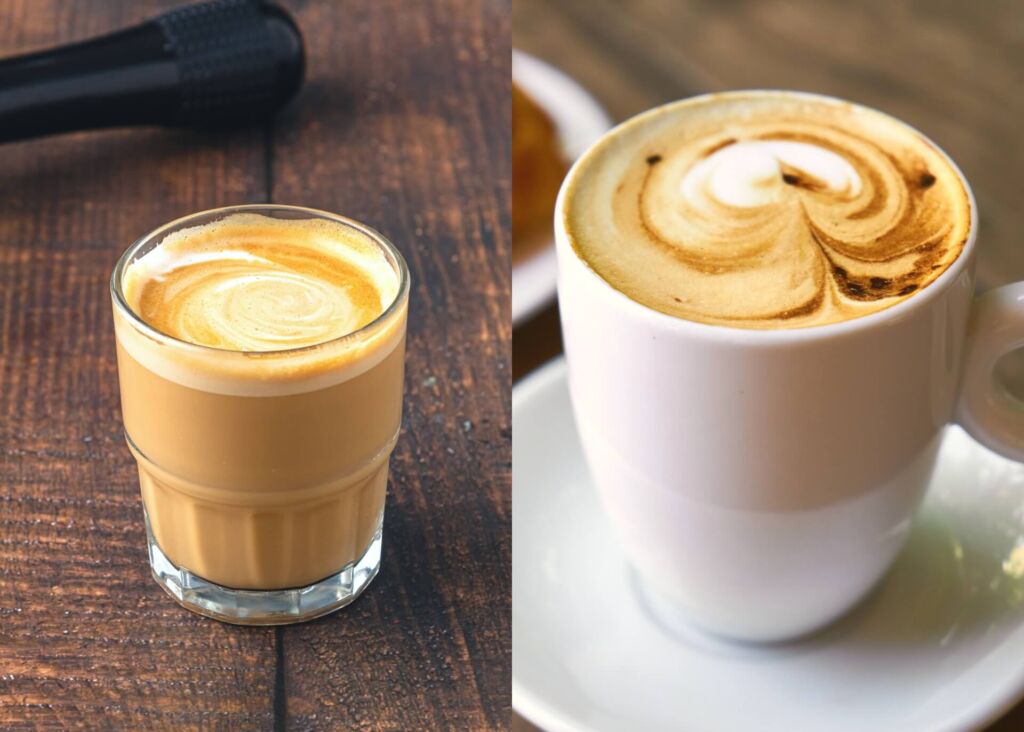
Milk
Milk is the main difference between cortado and cappuccino. A cortado has little to no foam, while a thick foam is a cappuccino’s defining feature.
Cortado is made only with steamed milk, so it has less foam. As milk naturally forms tiny bubbles called microfoam when steamed, a thin foam layer may be on top of your drink.
This layer might be enough for the barista to make latte art. But it’s not unusual for a cortado to have no foam whatsoever.
As cappuccino contains one-third and foamed milk, it is possibly the foamiest coffee-based drink.
Milk content is the second biggest difference between a cortado and a cappuccino. Simply put, due to its basic recipes, a cortado has less milk than a cappuccino.
Each drink is traditionally made with whole milk. However, modern coffee shops often also offer non-dairy or skim milk options.
When using light or non-dairy milk alternatives for cappuccino, choose one suitable for frothing, such as almond or oat milk. Meanwhile, heavy foam isn’t essential for a perfect cortado so you can pick your milk alternative more freely.
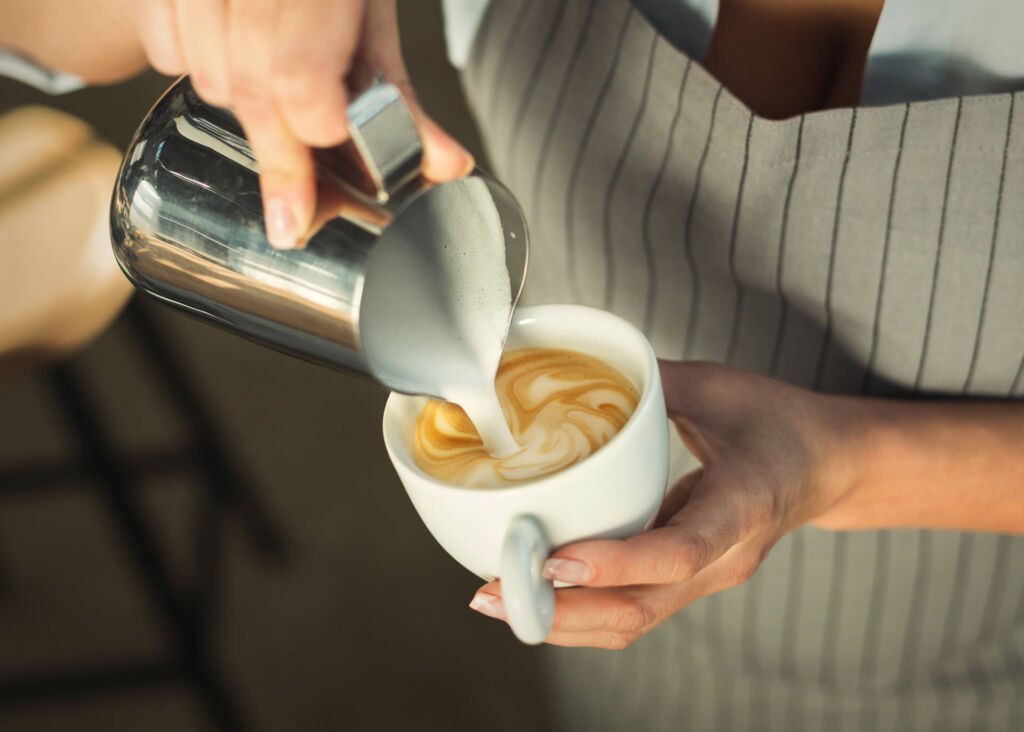
Texture
The different milk content between a cortado and a cappuccino gives the two espresso drinks different textures. A cortado is thicker and denser in consistency. A cappuccino has a much lighter texture.
Made of half espresso and half milk, a cortado has a rich texture. Although the top foam layer is thin to nonexistent, the dispersed microfoam makes it feel velvety smooth on your palate.
Cappuccino has an airy texture, as it combines espresso with froth. If you drink a cappuccino without stirring it, you will notice that the thick foam on top has a lot of air.
When mixed, cappuccino becomes a light and creamy drink. In fact, it may be a bit too light to satisfy strong coffee fans, although they enjoy the taste.
Some people ask the barista to prepare their cappuccinos with toppings. Adding some whipped cream, for example, is a great way to give a cappuccino a thicker texture.
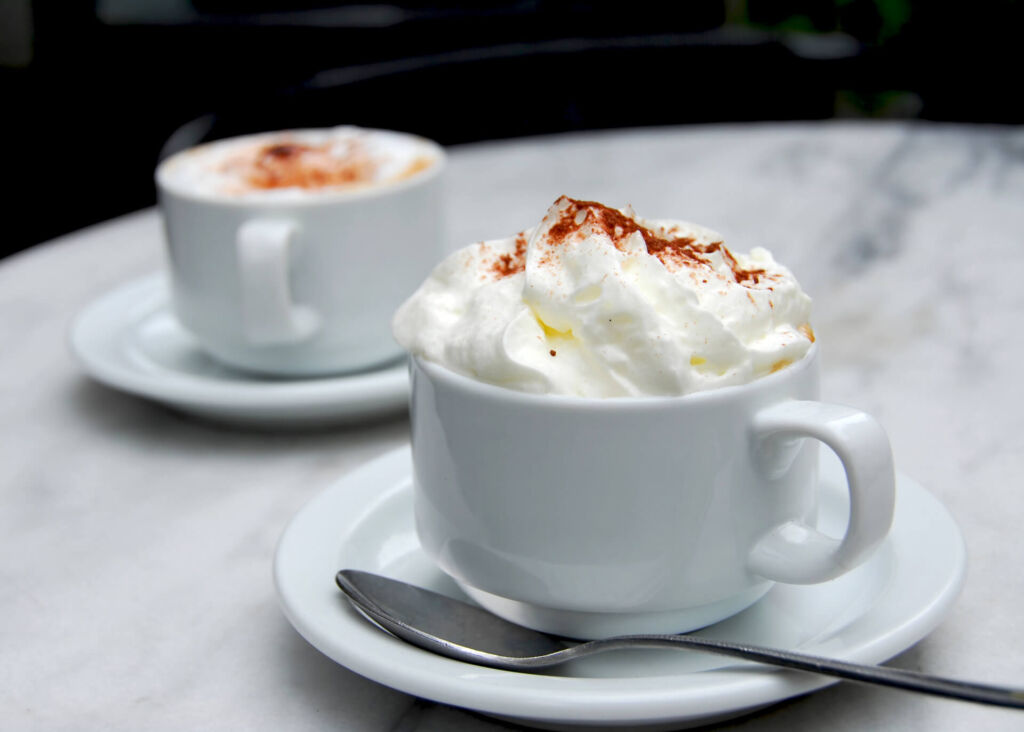
Taste
As you may guess, cortado and cappuccino taste different. Intense coffee lovers will likely enjoy a cortado, while fans of a milder flavor will find it in a cappuccino.
With less milk than a cappuccino, a cortado lets you enjoy more of the bold, intense flavor of dark-roasted espresso coffee beans. It also retains some of the espresso’s acidity.
However, adding steamed milk tones down the bitterness of the base shot of espresso and makes it easier on your taste buds. The milk’s sweetness and espresso’s strong coffee taste make cortado a delicious, balanced cup of coffee.
Adding steamed and foamed milk in equal amounts makes a cappuccino a much sweeter and less bitter drink. The frothy layer on top gives it a lighter flavor with low acidity.
If cappuccino’s naturally sweet taste is not enough for you, you can enhance it with various toppings, such as cinnamon, chocolate powder, or chocolate sauce.
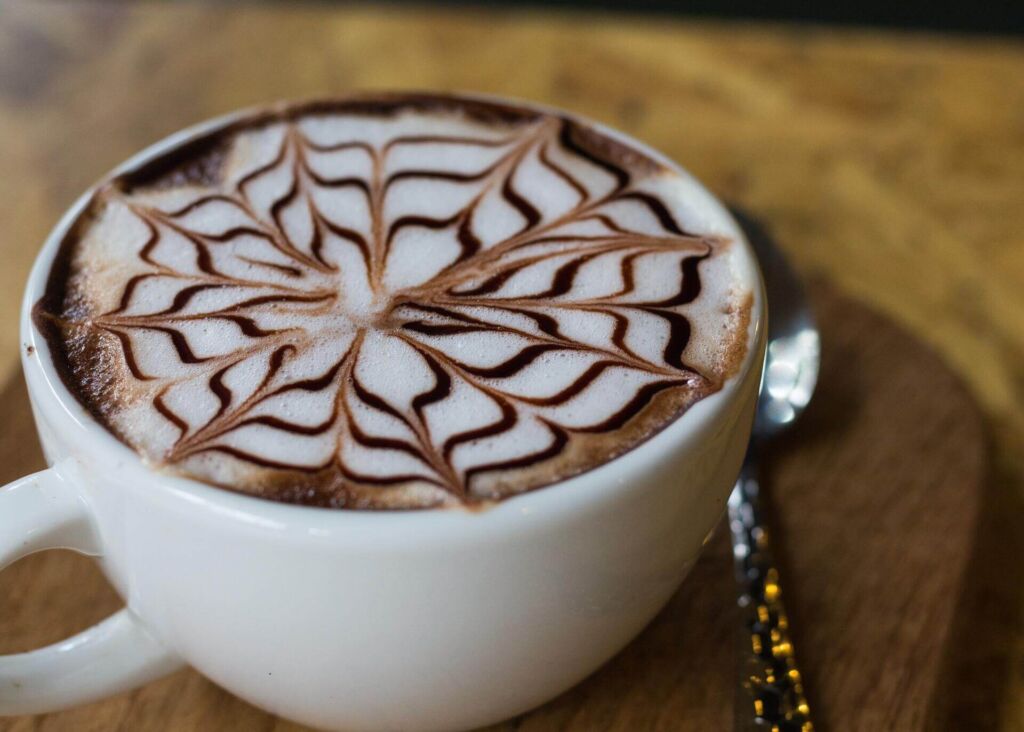
Caffeine content
Cortado and cappuccino are equal in caffeine content. Their basic versions contain the same amount of espresso, so there’s no difference between a cortado coffee vs. cappuccino.
A single shot of espresso contains roughly 63mg of caffeine. That means both drinks have around 120-130mg of caffeine — more than a regular coffee.
Warm milk doesn’t change caffeine content. However, you might feel a stronger caffeine buzz after finishing a cortado. This is simply due to the size difference.
As it’s a small drink, you will likely finish a cortado quickly, while a cappuccino takes longer to savor. Therefore, you will receive the full punch of the double espresso shot in a shorter time.
You might also be curious about the nutrition of cortado vs. cappuccino. In the battle of cortado vs. cappuccino, calories reveal a clear winner. A cappuccino is a heavier drink since it has more milk.
So as you see, both coffee drinks have some differences that set them apart. A cortado, with an equal amount of steamed milk and espresso, has a velvety, rich texture and tastes much stronger. In contrast, a cappuccino is perfect for a sweet-tooth coffee lover with its light taste and thick foam layer.
Yet, each beverage is delicious in its own way! If you are used to one of those drinks, give the other a go. You just might be pleasantly surprised.
